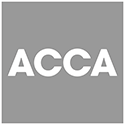Internal Audit
Previously known as responsible office services
It is a requirement of the Academies Financial Handbook that all academy trusts must have a programme of internal scrutiny (Internal Scrutiny is a term used in the Academies Financial Handbook. We use the terms Internal Scrutiny and Internal Audit interchangeably throughout this site) to provide independent assurance to the board that its financial and other controls, and risk management procedures, are operating effectively.
Each trust must identify on a risk-basis, by reference to its risk register, the areas it will review each year.
Because we're a specialist firm that focuses entirely on services to the academy sector, we can provide independent, internal scrutiny at the highest quality at a fraction of the cost of some larger accountancy practices.
You can be assured of the competence and quality of our work because...
- Academy Advisory Ltd is regulated by the ACCA, the world’s largest global body of accountants.
- We act as internal auditors for academies and trusts across the UK.
- Our team works as both auditors and finance directors within the sector.
- We know the challenges you face running your trust because we help to run them too.
- Each audit visit will be reported formally and summarised in a termly report for the Trust audit committee.









